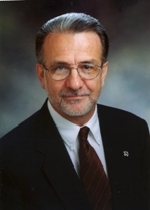EDUCATION
Ph.D. Coastal and Oceanographic Engineering, University of Florida, 1999
M.S. Coastal and Oceanographic Engineering, University of Florida, 1973
B.S. Civil Engineering, Arizona State University, 1969
EXPERIENCE:
2014-Present Research Professor Emeritus
2012-2014 Research Professor and Associate Director, Geosystems Research Institute, MSU
2009-2012 Co-Director, Northern Gulf Institute
2002-2012 Research Professor, Civil & Environmental Engineering, Mississippi State University
1997-2002 Technical Director for Navigation, Coastal and Hydraulics Laboratory, U. S. Army Engineer Research and Development Cntr, Waterways Experiment Station, Vicksburg, MS.
1985-1997 Chief, Waterways, Estuaries, and Hydrosciences Divisions, U. S. Army Engineer Research and Development Center, Waterways Experiment Station.
1971-1985 Research Hydraulic Engineer, Hydraulics Laboratory, U. S. Army Engineer Research and Development Center, Waterways Experiment Station.
1969-1971 Civil Engineer, Structures Laboratory, U. S. Army Engineer Research and Development Center, Waterways Experiment Station (WES), Vicksburg, MS.
SELECTED PROFESSIONAL ACTIVITIES:
Diplomate, Navigation Engineering, Academy of Coastal, Ocean, Port, and Navigation Engineers
Registered Professional Engineer, Mississippi
Fellow, American Society of Civil Engineers
Member: MWRA, COPRI, IWRE, PIANC,
Chair, Navigation Sub-Committee, Coasts, Oceans, Ports, and Rivers Institute (COPRI)
